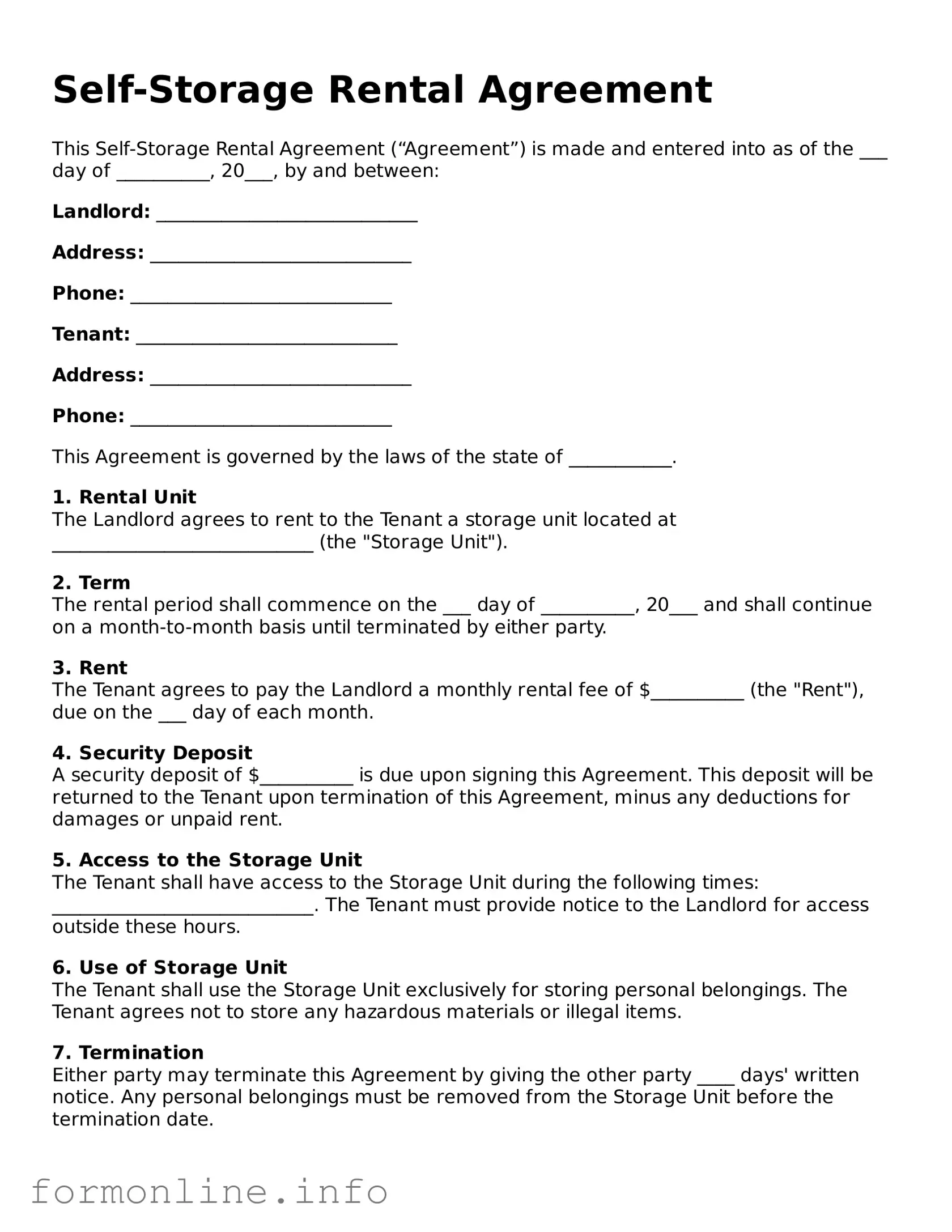Self-Storage Rental Agreement
This Self-Storage Rental Agreement (“Agreement”) is made and entered into as of the ___ day of __________, 20___, by and between:
Landlord: ____________________________
Address: ____________________________
Phone: ____________________________
Tenant: ____________________________
Address: ____________________________
Phone: ____________________________
This Agreement is governed by the laws of the state of ___________.
1. Rental Unit
The Landlord agrees to rent to the Tenant a storage unit located at ____________________________ (the "Storage Unit").
2. Term
The rental period shall commence on the ___ day of __________, 20___ and shall continue on a month-to-month basis until terminated by either party.
3. Rent
The Tenant agrees to pay the Landlord a monthly rental fee of $__________ (the "Rent"), due on the ___ day of each month.
4. Security Deposit
A security deposit of $__________ is due upon signing this Agreement. This deposit will be returned to the Tenant upon termination of this Agreement, minus any deductions for damages or unpaid rent.
5. Access to the Storage Unit
The Tenant shall have access to the Storage Unit during the following times: ____________________________. The Tenant must provide notice to the Landlord for access outside these hours.
6. Use of Storage Unit
The Tenant shall use the Storage Unit exclusively for storing personal belongings. The Tenant agrees not to store any hazardous materials or illegal items.
7. Termination
Either party may terminate this Agreement by giving the other party ____ days' written notice. Any personal belongings must be removed from the Storage Unit before the termination date.
8. Governing Law
This Agreement shall be interpreted and governed by the laws of the State of ____________.
9. Agreement Binding
This Agreement constitutes the entire understanding between the parties and supersedes any prior agreements, representations, or understandings.
In witness whereof, the parties hereto have executed this Self-Storage Rental Agreement as of the day and year first above written.
Landlord Signature: ____________________________ Date: __________________
Tenant Signature: ____________________________ Date: __________________
